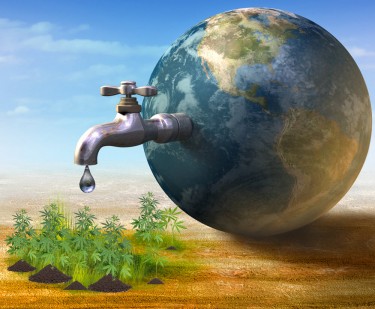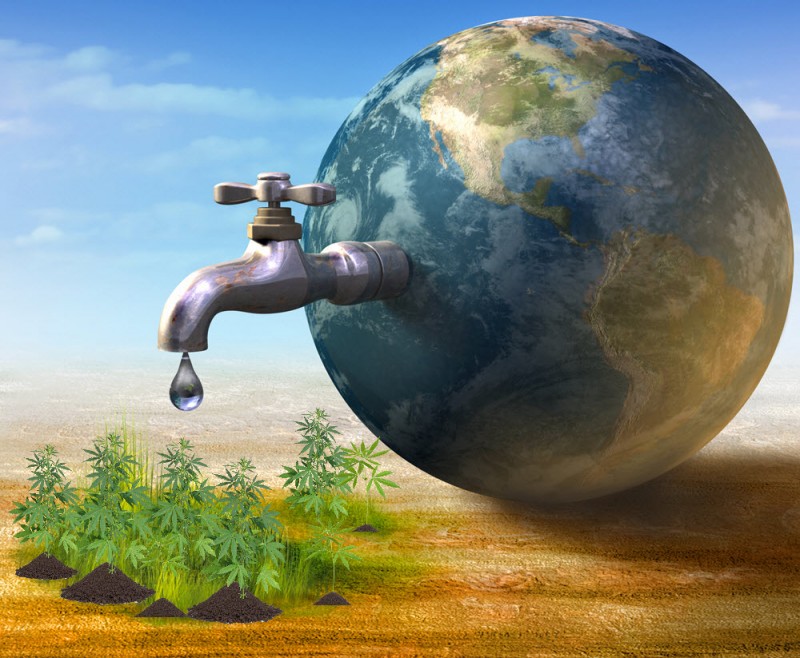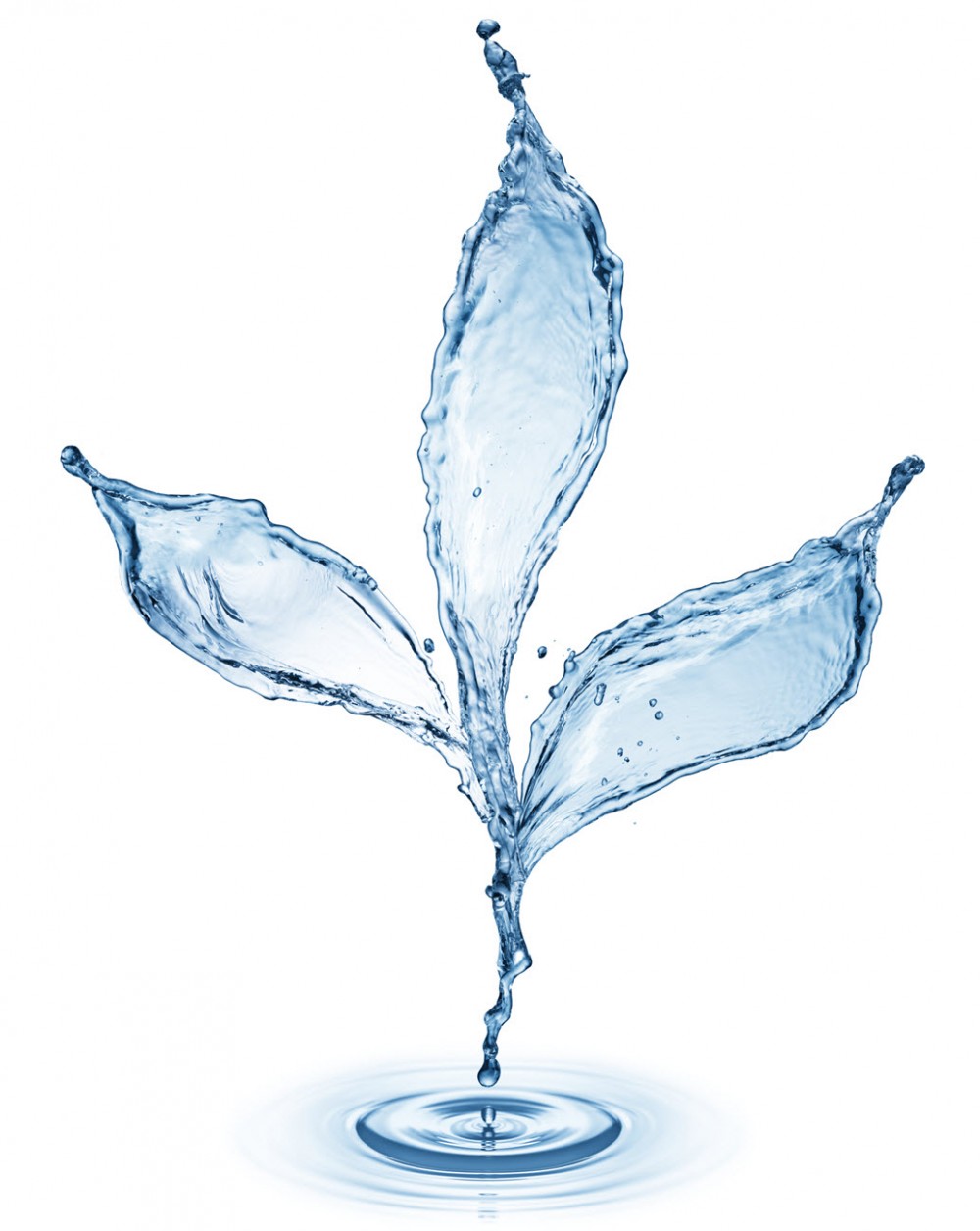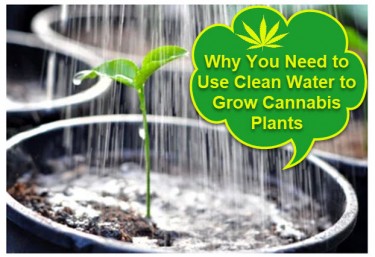How Do You Grow Water-Hungry Cannabis Plants in Drought Conditions?

Cultivating cannabis in a drought isn't impossible, though it is a challenge that's difficult to overcome.
There are areas with majorly hot and dry climates.
How do these marijuana farmers cope?
At the end of each growing season, these farmers still put out cannabis harvests that look healthy, as though they got everything needed to grow—They did.
Read on for a comprehensive guide that will help you understand the concept of growing marijuana during a drought.
Availability of Water
Water is needed in the cultivation of all crops, marijuana is no different. Provisions for water have to be made available for the outdoor cultivation of cannabis. A growing season without water is just a waste of time. In dry and arid soils, farmers have developed intricate irrigation systems that provide the water needed to keep the plants hydrated.
The climate seems to be changing, no thanks to our poor activities that seem to be causing global warming on the planet. In the last growing season, farmers had to think on their feet to provide water for their plants as many parts of the country faced varying levels of drought constraints. These drought conditions will likely remain this season also.
Ways to ensure adequate water supply
They include:
-
Procuring water shares either by outright purchase or by leasing.
-
Maintaining water shares.
-
Irrigation system (pivot, drip, or flood designs).
-
Practicing regenerative methods to retain soil moisture.
-
Utilizing the available water supply.
Irrigation Systems
The irrigation system applicable to farms depends on the field and the cannabis variety to be planted. Every cannabis variety is different, the Same way every farm and field vary in their soil needs.
Here are the general guidelines for selecting the irrigation system that works best for various crops.
Drip Irrigation
This is perfect for A cannabis or hemp field that is cultivated for the flowers and biomass needed for cannabinoid production. Especially when the cultivator plants on raised beds. This irrigation method allows the cultivator to provide nutrients directly to the plants.
The drip irrigation design is very precise.
It supplies a low-pressure water delivery to the root and base of the plants. With this method, the leaves of the plant do not get wet.
The design is more like a row of tubes or tapes placed along the row of plants. It can be below or above the ground level, however, it is not placed higher than the expected height of the plant. It is most of the time automated.
Drip irrigation can be used in a field that is as wide as a 20 to the 50-acre range. In addition to cannabis, it can also be used for craft flowers and in the production of large quantities of biomass.
It is a cost-effective irrigation method. As the cultivator expands the cannabis field, more pipes are laid. It saves the labor cost that would be incurred if workers are paid to wet the flowers instead.
Pivot Irrigation
This is another optimal alternative for cannabis cultivation. It is ideal for the cultivation of industrial hemp.
The pivot irrigation method is also used for plants arranged in rows. They look like large sprinklers. They draw water from a source, could be a river, a well, or a tank, and spray the plants in a clockwise direction.
It can also be automated and when compared to flood irrigation, it uses less water. But, it is not as efficient as the drip irrigation system, as water can land on the leaves without making it down to the soil. It is perfect when the plants are still in the germination and seedling phase.
A crop's germination rate improves when there is an adequate supply of water.
Flood Irrigation
This method of irrigation is cost-effective and is most times out in place when there is direct access to free or affordable water bodies.
Water is used excessively as the system is designed to pump water from the source to the field; covering the soil. This can cause mold and other diseases to spread in the crop, reducing the quality and quantity of expected yield.
Water Supply
An irrigation system needs a stable supply of water all through the growing season. For cultivars that purchase water, they have their water delivered to ponds. There is a ditch system also used in the west that monitors how much water is supplied to a farm..
Many are actively preparing for the impending dry season as states might cut off water supplies to farms and other establishments. Residential homes are always prioritized.
Right now is the best time for growers to start taking steps to replenish their irrigation ponds.
Before summer sets in, all farmers should try to have enough water in their ponds to prevent disasters like wildfires on their cannabis plots.
One other thing is the conservation of water on the farms. Some farmers tend to exhaust their water supply mid or late-season, even before plants get into their flowering stage.
The farm manager of Center Pivot Group, Ben Grinnel, in an interview said ``one thing about water is, once it's downstream, it's impossible to get it back".
Conserving soil moisture
Regenerative agricultural practices are employed to efficiently maintain the moisture level of the soil. A good example of this practice is no-till farming.
No-till farming helps the ground hold a lot of the moisture gotten during the winter and spring seasons.
Practicing conventional cultivation methods can be detrimental to a field's soil. In Grinnel's words; "every time you turn the soil or make a pass through it, tons of moisture is lost through evaporation.
Bottom Line: Water is Essential to a Cannabis Field
People can argue that marijuana and hemp do not need water to survive, seeing that they thrive in dry conditions. But the truth is no crop can do without water. Having an optimal amount of water would further boost the yield of a cannabis crop.
Therefore to ensure adequate water supply for outdoor cannabis in a season of drought, you need to put an irrigation system in place and then practice water conservative measures.
Do this, and expect a maximum crop growth potential, as well as, yield. (Provided all other cultivating factors are satisfied)
CANNABIS WATER USE, READ MORE...
WATER SUPPLY TIPS WHEN GROWING INDOOR CANNABIS, CHECK THIS OUT!
OR..
CLEAN WATER FOR CANNABIS PLANTS, YOU BET, READ WHY!








